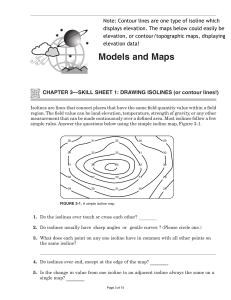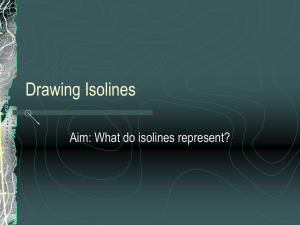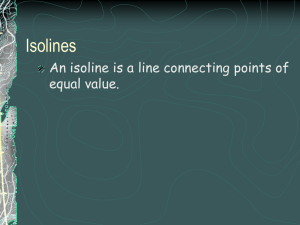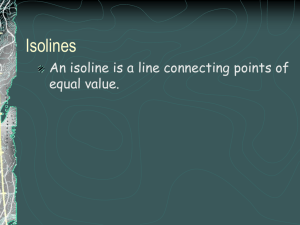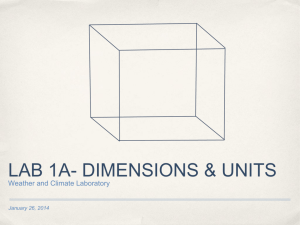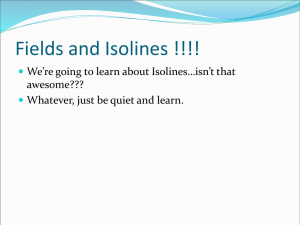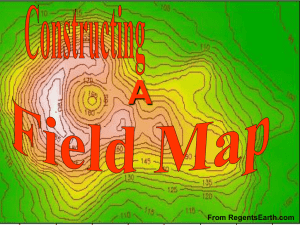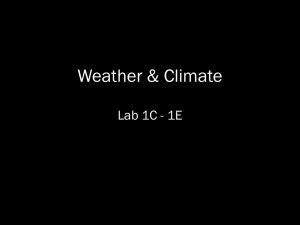REPRESENTING CLIMATE DATA Part I Maps and Numbers
advertisement
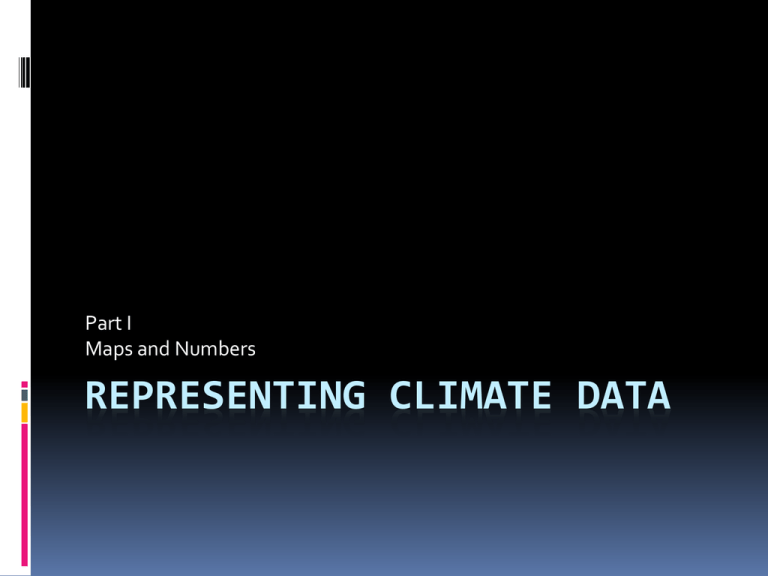
Part I Maps and Numbers REPRESENTING CLIMATE DATA Station Models Isoline Maps Station model: an abbreviated plot of weather station data Station model: abbreviation of weather station data Station model: Text, pp. 488-489, textbook Pressure (without decimal point; without initial 10 or 9)(mb) Air Temperature Present weather Dew point Wind direction Cloud cover Wind speed pressure change in past 3 hrs (without decimal pt) Cloud cover Circle centered on station location scattered overcast Air temp; dew point temp Air temp Dew pt temp Wind direction Direction arrow points is wind direction (direction wind is coming FROM) If calm, no arrow and double circle Wind speed “knot” Nautical mile per hour 1 knot = 1.15 mph; 1.9 km/hr Present weather Current pressure 3 numbers; in mb; no decimal point; 10 or 9 at beginning of number is NOT shown 162 Does number begin with “10” or “9” ? 162 = 1016.2 mb 353 ? 893? 1035.3 mb 989.3 mb 175? 074? 1017.5 mb 1007.4 mb 985? 890? 998.5 mb 989 mb Pressure tendency during past three hours 02 Amount of change; mb; No decimal shown; 07 13 Last night Station Model Exercise : In pairs: Pick any 4 cities and make station models. Each pair make 4 Isoline maps Interpolate between discrete data points to create a continuous “surface”: Helps us to visualize the data examples: Elevation surface Pressure surface Temperature surface Topographic map an elevation surface Contour lines Temperature map 20 30 40 50 50 60 isotherms Pressure surface isobars Isolines “connect points of equal value” Types of isolines: Isobars: pressure Isotherms: temperature Isohyets: precipitation amount Isodrosotherms: dew point Isogons: wind direction Isotachs: wind speed Isoshears : wind shear All data values on an isoline are equal. The interval between lines is constant for the entire map. 50 50 45 40 52 39 60 43 60 70 64 69 58 Rules for making an isoline map: Lower values are always on one side of isoline ; higher values on the other side . Isolines NEVER CROSS OR TOUCH, NEVER SPLIT . Isolines will generally be SMOOTH AND PARALLEL. LABEL each isoline on the ends for open and in the center for closed isolines. 35 35 Interpolate between points as exactly as possible! Do NOT draw lines where there are no data points. Use a pencil 35 39 32 48 39 39 40 45 35 40 38 50 52 51 51 52 42 50 64 60 63 52 62 62 75 59 66 65 69 74 62 71 78 65 75 72 Trough: line of relatively low values (Isolines point to higher values) Ridge: line of relatively high values (Isolines point toward lower values) Terms usually used on pressure maps Gradient Steep/strong gradient: close isolines Weak gradient: widely spaced isolines 500 miles 1004 1020 1006 1008 1010 1018 1014 1016 1012 Exercise Create an isobar map from Station Models (station model map of US Plains states) Use a 5 mb interval, starting at 1000. Identify the pressure on each station model. Remember to: A) insert the decimal to give the number a tenths place B) add a 9 if the first number is greater than 5 or a 10 if the first number is less than 5. examples: 184 = 1018.4 mb; 997 = 999.7 mb

